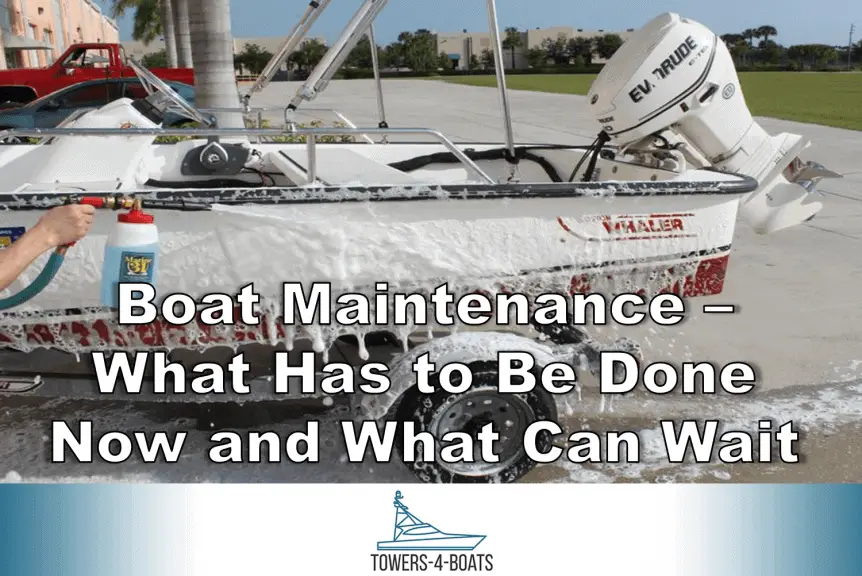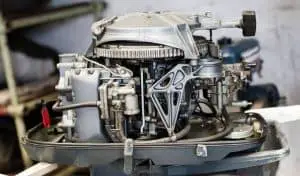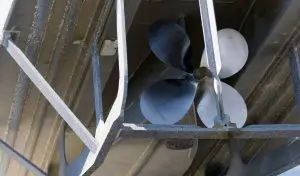Does All Boat Maintenance Need to Be Done Right Away
Everybody knows that B.O.A.T. stands for “bring out another thousand,” right? Yes, boats are expensive to buy. But they are costly to maintain too. Not every boat owner has a money tree growing in their backyard, and sometimes we have to separate the must-do items from the ones that can wait until next season. The trick is to prioritize smartly.
Boat maintenance can be categorized in three ways. First, there is actual maintenance. This consists of basic upkeep tasks that keep it in working order. Simple things like cleaning the bilges and bilge pumps, changing the engine oil, or replacing the steering cables can all be considered maintenance. These things keep the boat working safely. Secondly, there are repairs when something breaks and needs to be fixed or replaced. The third type of thing we spend money on is the boat upgrade. Lithium batteries, new chart plotters, radar, or whatever you’re drooling after at the moment are examples of upgrades.
Boat Maintenance That Must Be Done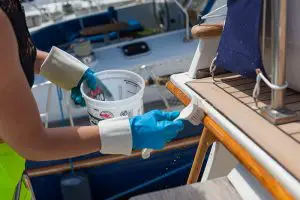
The first litmus test to figure out if a job must be done is to ask yourself if the item in question is a safety issue. If the motor fails on a single-engine boat, you might be in for a world of hurt. If the bilge pump or pumps stop working, you have no way to dewater the vessel in an emergency. These are just examples, but if the maintenance or repair you are pondering involves anything that keeps the water out, keeps the engine running, or keeps you from being on fire, then it goes without saying that the maintenance should not be deferred.
Winterization
If you live in an area where freezing weather is possible, one task you should not put off is winterizing your boat. Proper winterization protects the boat from cracked engine blocks, broken through-hulls, and possible sinking. Avoid finding costly surprises come springtime by winterizing properly, whether doing it yourself or paying your boatyard to do it for you. Check out our complete guide to boat winterization.
Maintenance Below the Waterline

Things below the waterline can cause trouble. If your boat has through-hull fittings and valves, you’ll need to exercise the valves often to keep them moving freely. The nicer ones have grease zerks so that you can lubricate them for a long life. A broken through-hull fitting can sink a boat, and they are most often broken when trying to be forced open or closed.
Likewise, the hoses connected to through-hull fittings should be kept in the best condition. Replace cracked hoses as soon as you notice them. All hoses attached to below-the-water through-hulls should be double hose clamped. And it should go without saying that any leaks should be tended to ASAP.
The bilges are another problem area. Keeping your bilge area clean is an essential maintenance item. Dirty and greasy bilges foul bilge pumps and bilge pump switches. The bilges need to be cleaned, as do the bilge pumps and their switches. Test your pumps occasionally to make sure they work, and double-check that there is no corrosion on the wiring. Bilge pumps should be considered critical safety equipment.
Outside the hull, boaters must replace their sacrificial anodes occasionally. Many folks still call their anodes zincs, even though aluminum alloys are becoming the metal of choice for anodes. Whatever they’re made of, anodes on the hull, engine, and drive protect your valuable through-hulls and running gear from galvanic corrosion. They will waste away, and they must be replaced. The rate at which they decay varies depending on several factors, but they should be replaced regardless of their visual condition every six months or so.
Engine and Steering System
Any engine requires routine maintenance to ensure reliability. Oil changes should not be considered optional or deferrable. Likewise, water pump servicing and the manufacturer’s lubrication schedule should be followed to the letter. Keeping your engine running and starting easily is a safety item too.
Any maintenance regarding the steering system of the boat needs to be followed to the letter. If your boat has cable steering, inspect the cables regularly. Hydraulic systems are pretty bullet-proof, but they need inspections and service regardless.
Likewise, problems with your electrical system should not be put off. Shorts and leaky grounds can cause a wide range of issues on board your boat. If you notice dirty or corroded electrical connections, tend to them immediately. Boat fires are commonly traced back to electrical system problems. If your boat has shore power, checking the cord and ship-side socket should be regular maintenance items. Look for burn marks or any sign of corrosion, and replace immediately if anything abnormal is noticed.
Corrosion
Boats float around their entire lives in an acid. Onboard are electrical systems and a wide variety of different conductive materials with different electric potential. All of this is the perfect setup for all sorts of corrosion.
As a boat owner, you’re always on the lookout for corrosion. Pay special attention to underwater metals, places where two different types of metal contact each other (like when a stainless steel screw goes into an aluminum mast), or in places where stainless is not exposed to air.
Engines are a corrosion hotspot. Most are a miss-mash of steel and aluminum. Tend any chipped paint. If you notice rust, clean it with a wire brush and treat it with a rust inhibitor, like Ospho, before painting. You can also consider treating the entire engine with a run inhibitor like CorrosionX.
Fouled Bottoms
For boats that stay in the water, one of the most commonly deferred items of maintenance is cleaning the bottom. While a boat with fresh bottom paint won’t need cleaning for six months or more, after that, monthly cleanings are essential to keep your vessel performing as it should.
It’s easy to get lulled into thinking that you won’t mind a bit of trade-off by saving money and letting it grow. Unfortunately, a badly fouled bottom can jam rudders and add a hefty amount to drag to the hull. Engines can and do overheat when pushing dirty hulls and turning propellers that are chunky with barnacles and growth.
It’s okay to defer the haul-out and repainting of a boat, but you need to realize that you will spend more time cleaning it. If you do it yourself, you might save some money, but if you pay a diver each time, you might wind up spending more in the long run.
So What Boat Maintenance Can Wait?
If you’re pondering maintenance or repair of a non-critical item, consider how having it not work affects you and others who enjoy your boat. If the item doesn’t affect your safety in any situation and isn’t required by law (like navigation lights), then you can probably put it off.
Remember that the longer you put off tasks, the more you’ll have to do later. That might sound silly and obvious, but the rate at which an unattended boat can deteriorate is legendary.
Cleaning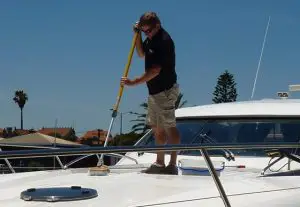
Beyond overall corrosion control, most above-the-waterline cleaning tasks can wait awhile. Dirty or oxidized gelcoat can be cleaned with a good compounding and wax. Brightwork (teak and other woods) can be left untended for several seasons before it deteriorates. Likewise, bottom paint can be left for another season, as long as you are okay with more frequent cleanings. We wrote a great article on the easiest way to keep your boat clean.
But be aware that the longer you defer these tasks, the harder they will be to achieve when you finally get around to them. They also affect the value of your vessel, so if you are selling the boat, these cleaning tasks are important to get top dollar.
Upgrades
Generally, upgrades can wait. We all want fancy new toys, but often you have to cast a skeptical eye on the cost of boating gadgets. The most cost-efficient method is usually to keep what you have installed already working by repairing or replacing it with similar items.
It should also be noted that when upgrading your boat, you should keep an eye on the resale value of your vessel. Most vessel values do not increase much, no matter what equipment you add. So don’t fool yourself into getting the top of the line chart plotter and fish finder for your 19-foot lake boat. You most certainly won’t get that money back. Looking for a cool upgrade? Check out our review of LED lights.
Conclusion
Of course, when you have a boat you love and you want to keep boating with it for years to come, the continuous maintenance and upkeep is a small price to pay. Our boats take care of us out there, so it’s only fair that we take care of them once in a while.
No matter what type of boater you are, you are continuously faced with questions of what sorts of maintenance and necessary and what can be deferred. By prioritizing carefully, and asking for help from professionals when it’s beyond your experience, you can safely put off some of the basic tasks for a season or two.

